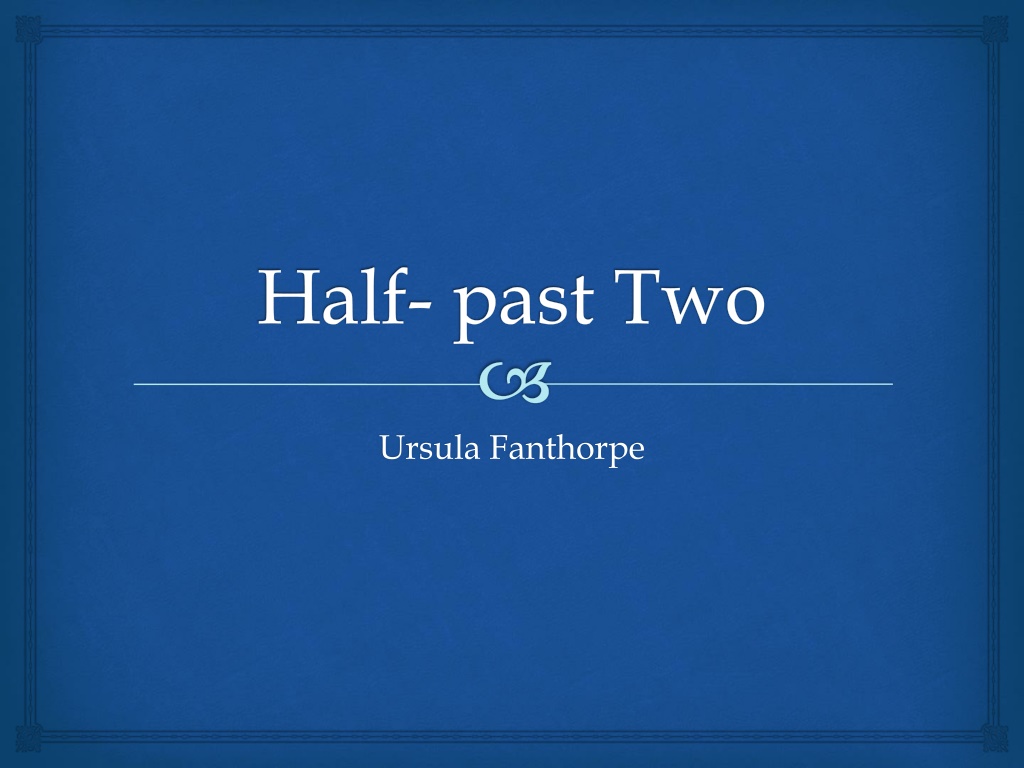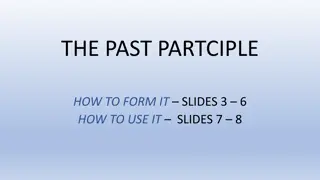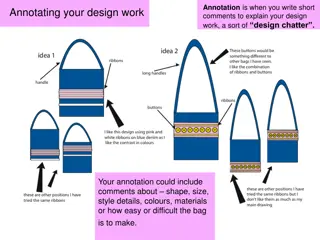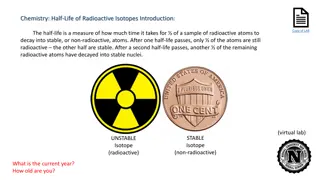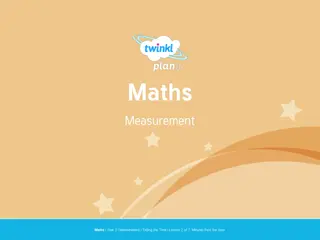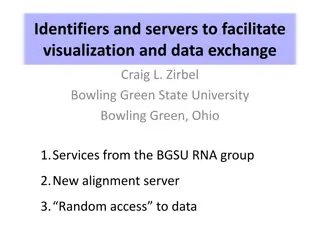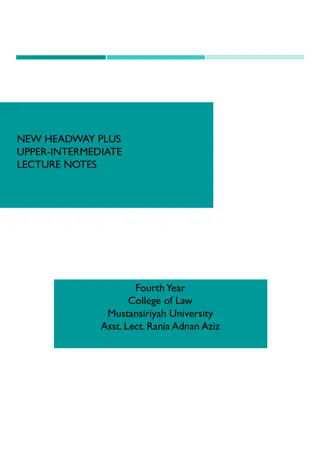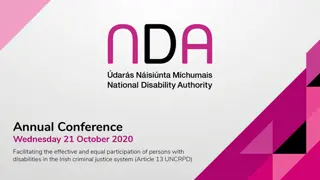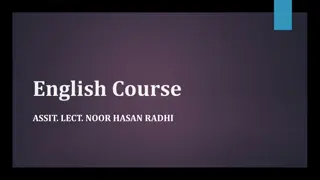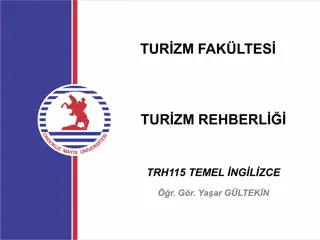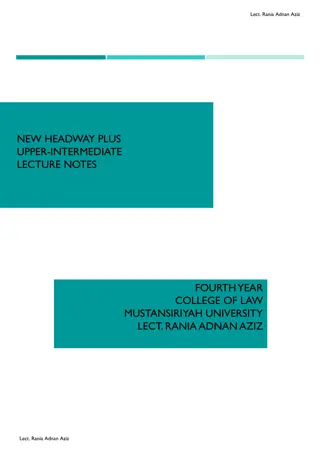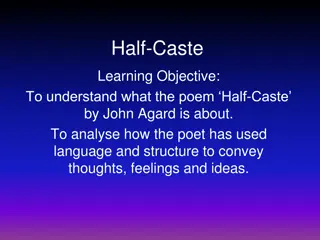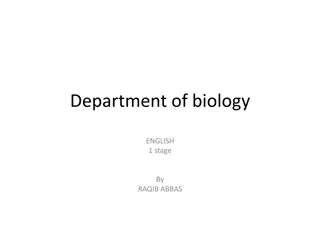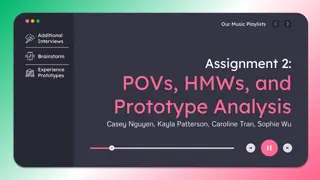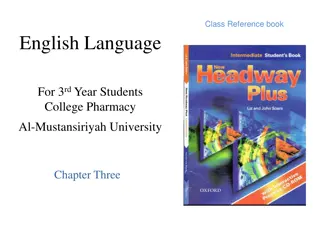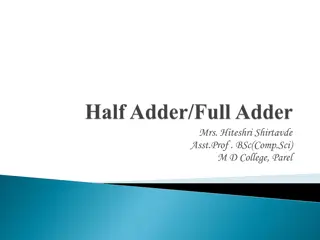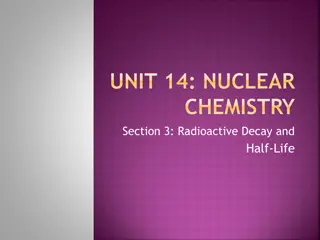Annotating "Half-Past Two" by Ursula Fanthorpe
"Annotating "Half-Past Two" by Ursula Fanthorpe reveals a poem about a young child's experience with time confusion at school, leading to detention. The analysis highlights literary techniques used to convey the child's perspective and the theme of childhood innocence amid adult expectations."
Download Presentation

Please find below an Image/Link to download the presentation.
The content on the website is provided AS IS for your information and personal use only. It may not be sold, licensed, or shared on other websites without obtaining consent from the author. Download presentation by click this link. If you encounter any issues during the download, it is possible that the publisher has removed the file from their server.
E N D
Presentation Transcript
Half- past Two Ursula Fanthorpe
What is this poem about? This poem is about a young child who is not able to tell time. He is issued a (possibly) lunch time detention for doing something wrong but we are never told what he had done. The poem does not have a single voice so it is quite confusing to know who is speaking when. The author does this to show us how confusing it must be for the child not knowing the time. This is intentional!
Highlight and make notes! Fairy tale like beginning- unusual since it is not a fairy tale- confusion created. Once upon a schooltime He did Something Very Wrong (I forget what it was). Capital letters- mimic the teacher the way she might have been speaking. Also creates interest and importance. The brackets- the speaker changes now from a child to the narrator or even the teacher. This also creates confusion which adds to the theme of childhood. Humour is created here too. Is someone has dome something very wrong how can you forget it?
Stanza 2 Capitalisation for the she because of respect for the teacher this is the boy telling us this as he makes a mistake and says till and not until And She said he d done Something Very Wrong, and must Stay in the school-room till half-past two. Note that the boy gets a lower case letter he. He does not get as much respect as the teacher even though Her name is not mentioned. Why? Enjambment is used as this line carries into the next without punctuation. This speeds up our reading process.
Stanza 3 This is still the boy telling us the story as he used simple words such as cross and wicked . As he is very young he cannot use more complex language. (Being cross, she d forgotten She hadn t taught him Time. He was too scared of being wicked to remind her.) Time gets a capital T- as it is the main theme for this poem. It creates confusion for the boy and possibly the teacher too!
Stanza 4 Compound words- he does not know the precise time when he does these particular things but he knows them by the name. Maybe he is mimicking his parents the way they say it? Once again this is narrated by the boy as he is telling us all the times he does recognise. He knew a lot of time: he knew Gettinguptime, timeyouwereofftime, Timetogohomenowtime, Tvtime, Where does this comma lead? Enjambment used to speed up the pace. Children often speak without pausing. Trying to recreate their language.
Stanza 5 Timeformykisstime (that was Grantime). All the important times he knew, But not half-past two. These lines are carried on from the previous stanza. This line is still narrated by the child. We can infer that this is said by the unknown narrator.
Stanza 6 He knew the clockface, the little eyes And two long legs for walking, But he couldn t click its language, Personification is used as the child gives the clock human qualities This stanza is very important as it shows the audience a change in language. Now it is more poetic rather than conversational. Onomatopoeia used. The narrator is no longer a child here but rather the unknown narrator.
Stanza 7 So he waited, beyond onceupona, Out of reach of all the timefors, And knew he d escaped for ever Enjambment is used throughout this stanza. Why? The boy waits a long time (as we are told beyond onceupona ). No more of a fairy tale like feel. We see that this has a negative effect on the boy.
She is forgetful too as these flowers are old. Criticism for adults Stanza 8 Into the smell of old chrysanthemums on Her desk, Into the silent noise his hangnail made. Into the air outside the window, into ever. The only escape the child has is through the window. Obviously this is not the literal meaning. His mind escapes. Narrated by the unknown speaker. Repetition of into Why? The use of senses: sound and smell. oxymoron. How can silence make a noise?
Stanza 9 And then, My goodness, she said, Scuttling in, I forgot all about you. Run along or you ll be late. Scuttling quite a negative verb used to describe the teacher. Almost like an animal. Speech in italics this is the teacher talking now. Her exact words.
Stanza 10 So she slotted him back into schooltime, And he got home in time for teatime, Nexttime, notimeforthatnowtime, This is what the teacher says to him. Translated this means that she does not have time for him now. Dismissive or efficient teacher? Which one? Once again we can see the negative language. Not very emotional as she slots him to his daily routine.
Stanza 11 But he never forgot how once by not knowing time, He escaped into the clockless land of ever, Where time hides tick-less waiting to be born. Fantasy as time cannot be eliminated. We can see that this incident with the teacher has left a negative impact on the child as he now wishes that the time did not exist. He also feels great as he escaped from the teacher. Personification as the time cannot be born or hide. Purpose of this poem is to criticise adults perhaps to show that children need to be treated like children .
